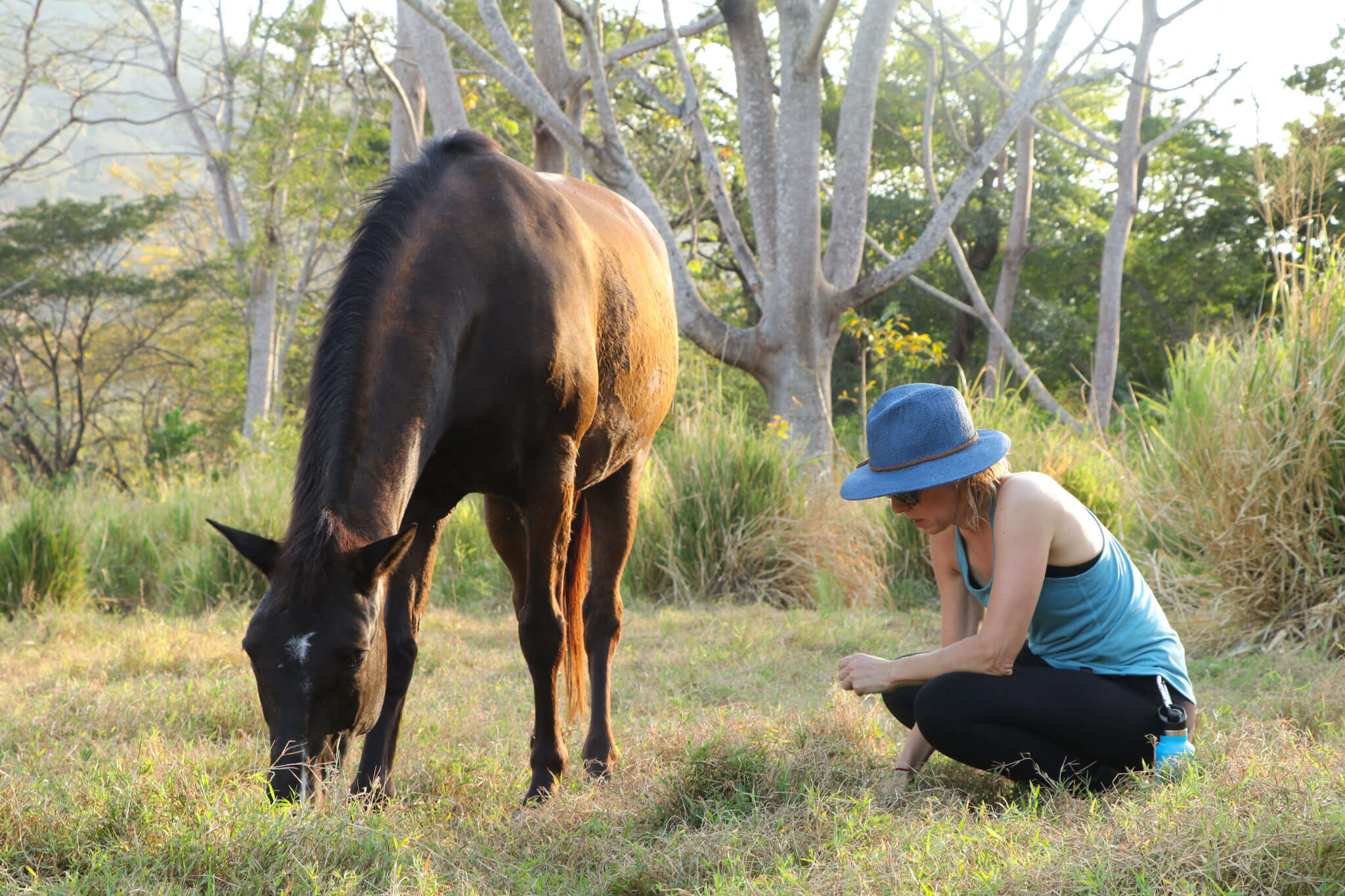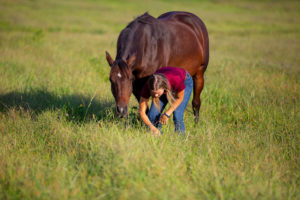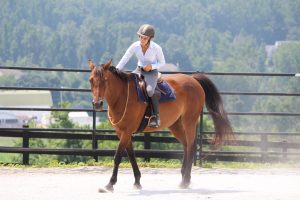What is connection?
A word that is so commonly used, yet so widely interpreted.
It is essential but can be experienced in many different ways.
As social species, we strive for connection, but how do we know when we are there, and why does the sense of connection often seem to fade as quickly as it comes?
Does connection require two? If I feel connected to my horse, but my horse does not feel connected to me, is this a true connection and how does it change so the feeling goes both ways?
In this article, we will explore these questions, coming out the other side with hopefully a clearer view of what is perhaps, the most special component of riding.

Why We Seek Connection
Connection matters, to us and to our horses, on a biological level. We are wired to seek connection because it is integral to our safety. Social species, which both humans and horses are, are not designed to be independent. We are wired to be part of a group, and the social cues from others tell us what is safe and what is to be feared, as well as how accepted we are amongst others.
Our internal programming, our unique tapestries of experiences and beliefs, gives us all a different sense of what connection is. How we have experienced connection in the past is how we will seek it in the future.
These differences in how individuals seek and recognize connection creates enough problems for members of the same species, and those challenges can become even greater when connections attempt to form among members of different species.
For both us and our horses, it is possible that there is a deeper level of connection than we have experienced in the past. But connection is not something that is attained and can then be forgotten. It is not constant, it is either strengthening or weakening. However, mistakes are not to be feared, because as I will explain later, rebuilding from those mistakes is what creates an even stronger connection.
The Two Elements of Connection
I believe there are two main elements to connection and either one of these without the other is often misinterpreted as connection, to the detriment of horse and person.
The first of these two elements is caring. I can care about my horse, loving them, wanting the best for them, thinking of them often – what field should they go in, what blanket should I purchase, does their saddle fit… But caring is not connection.
The second is awareness. I can be aware of my horse, I can notice every ear twitch, muscle tightening, and change in affect with the precision of a scientist, but awareness, on its own, is not connection.
No matter how deeply I care, if I am not aware of the other, of my horse, if I am not seeing how they feel, if I am not recognizing what they need or want, true connection will not occur.

Likewise, even if I am acutely aware of my horse’s state, but I don’t actually care about how they feel and I don’t care to want to bring positive feelings and changes, connection will not occur.
If I have both caring for and awareness of my horse, that is attunement. When I am attuned to my horse I notice what they need, I notice their requests, and I respond to them.
However, even with total attunement, connection may still not occur… because true connection requires this on both sides.
Connection can be talked about in different ways, we can connect with ourselves, we can connect with nature, but to find true connection with another… that requires awareness and caring from both.
To put it bluntly, caring without awareness is the doting owner with the miserable horse. Awareness without caring is the skilled trainer who creates exactly the behavior they want, but there is no love lost between them and their horse.
The Invitation
When we are seeking connection, we need to stay in the place of being attuned to our horse – of noticing what they do and caring about how they feel, whether that is a grimace as we run the brush over a certain place on their body, or a fear of the south end of the arena.
We cannot force connection from the horse, they have to choose to join us in that place. But we can keep ourselves in the state where connection is a possibility and an invitation. Whether or not the horse chooses to accept that invitation is their choice, and the moment we try to force it, the possibility for connection is gone.

Mistakes will be made. Because we each come with a slightly different blueprint for what connection is, we may ask for it in ways that our horse does not find particularly inviting. The same may happen when our horse asks for connection from us. We may not find their request inviting either.
Continuing to attempt to push through ignores the state of the other and will only serve to erode the relationship. Even the smallest of responses, when ignored over and over, can destroy a relationship.
But if we are attuned, we will see the response from the other, recognize our mistake and make a repair. Each of these repairs can serve to make the connection stronger, as trust is created on both sides and safety is found in the freedom to say no.
Connection is the real joy of riding, when it is absent, a certain spark will always be missing, but when horse and rider are connected, it doesn’t matter what they do, it’s going to be a great ride!
***
As I write this article, I recognize that you may not be able to even visit your horse right now and that the distance can feel long and lonely. Connection is still possible with distance, find an item that reminds you of your horse, a lock of hair, strap of leather, a stone from the barn drive, and use that momento to think of your horse. Practice awareness and caring with all those you do have contact with – family members or pets at home.














19 Responses
Hi Callie,
I really enjoyed this last blog post of yours – although it is about horses and people – it is totally applicable to human relationships. (And as such, for me it is really timely right now. The internet sometimes reads our minds and sends us posts that are truly relevant).
I have not been able to follow you as closely as I did a year ago but I am happy that you take a truly deep and meaningful approach to riding and horses – that goes far deeper than how to position your leg, for example)
From a readers’ and professional viewpoint as well ( I am a journalist), I find your posts, videos and content really engaging.
Best regards,
Zsofia Vegh
Budapest, Hungary
Thank you for your kind words Zsofia! Glad to have you as a part of our community!
-Julia, CRK Training Community Manager
Such an excellent blog! Simple yet nuanced!
Thank you Callie!
Your “blunt” paragraph is so true, not only with a horse but with our dogs, cats, … And also with other humans. It is risky because the caring may not be returned, but when it is, it’s worth the risk. I find it interesting that many horsewomen I know will regularly risk physical safety-going over jumps and pushing the horse to his limit- but be afraid of the emotional risk of connection.
Callie, that was an incredibly sensitive, nd subtle analysis. I have been riding at a stable for about 18 months on several different horses and have pondered this question since beginning. I knew very little of the horse’s perception of the world or their behavior so I have watched carefully as I groom the horses. As my riding skills have improved I’ve also learned to watch how the horse responds to small touches and shifts of weight, though I have a very long way to go in that area. I recently began riding a horse who tried to kick me several times when I initiated grooming. I was told that he had back pain but was all bark and no bite and that his back muscles would loosen up as I rode him. I was very careful in putting g on the saddle and mounting, talking to him as I did so to reassure him that I would.be careful not to cause discomfort. He is very sensitive about being groomed on his flanks and back, so I allow extra time for grooming so that I can touch him gently and reassure him that grooming will not be painful. After the third lesson I could see a big change in his response to me. I think he realized that I was listening to his signals of kicking and moving away and that I was changing my behavior I response. At that point, he started to be somewhat friendly. Unfortunately., the virus situation has closed the stable but I look forward to applying your insights when I go back. And I would love to hear more about “the doting owner and the miserable horse.”
Hi Susan, being perceptive is a huge asset to have around horses! I’m really sorry to hear that the virus situation has you separated from the barn at the moment. Sometimes horse owners think they are doing good for their horses by putting lots of heavy blankets on, keeping horses in stalls, or limiting their turnout by keeping them ‘safe’ when really the best thing we can do is let them live their lives as close as they would if they were in feral situations.
-Julia, CRK Training Community Manager
Glad you pointed out that caring is a risk. It can be a tough one to take, and I appreciate your reminder that it’s worthwhile.
thank you Callie, enjoyed this read immensely. Times like now, give us the time (if we’re lucky) to really get connected with our horse/s.
great suggestions Callie, very true !!sometimes I see my horse asking me something and I am not able to react properly: he is helping me to respond properly. it is the best moments in my life !!
This was a beautiful article, Callie. Thank you.
Glad you enjoyed this article Deborah – I hope you are staying healthy!
– Julia, CRK Training Community Manager
So beautifully written. It sounds like it comes from your heart. Thank you!
“the freedom to say no” How many people allow their horse to say no? What if the horse does not want to be ridden or schooled or groomed? Does the horse get a vote? How do we know when they aren’t feeling their best and how many of us respond by allowing the horse to rest?
So true! My horse always likes to work, but sometimes… she turns away when I come with the halter. Luckily I have 2 horses, then I take my other one
Hi Lynn, those are all the questions that can keep us up at night! The key is to being observant and picking up on the signs that the horse is giving us. Plus, giving them their time when we are together to do what they choose.
-Julia, CRK Training Community Manager
Yes, in a lesson yesterday my horse was obviously ready to quit early because he had no go. We did one more leg yielding exercise and then I had to tell my trainer that we were done. In the past, I would have stuck it out and continued by added a whip. So, I am trying to listen to him even when it effects my plans.
Thank you, Callie! I appreciate very much the awareness you bring to ‘connection’. It’s a wonderful feeling to have/know/share with another creature/person. It’s a beautiful gift of the universe.
Glad you enjoyed this article Judith!
-Julia, CRK Training Community Manager
Beautifully expressed and something we can take to every relationship in our lives. Sometimes we need to be reminded of the subtleties in life, and what better time than now as we are in a time and place that allows contemplation!